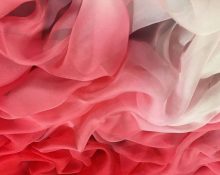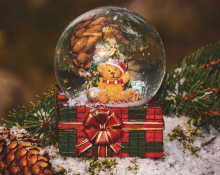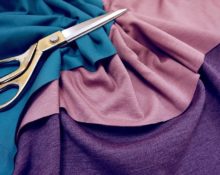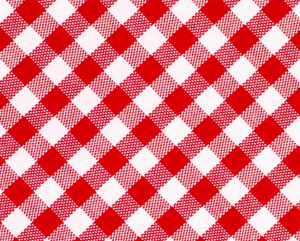
The tartan material has a rich history that began many centuries ago. Her historical homeland is Scotland. The first tartan material was created in the fourth century. Then it was called tartan or Scotland fabric. The material was widely used by local residents for sewing kilts - national dresses. These are large canvases reminiscent of modern bedspreads. They completely encircled the waist, and the remaining free part of the fabric was usually thrown over the shoulder. Only by the eighteenth century was the national dress improved. Kilts became smaller. At first they gained popularity among ordinary people. Lumberjacks especially liked the new product.
In the nineteenth century, tartan material became fashionable not only in its homeland, but also abroad. It was used for sewing blankets, bedspreads, hunting suits, hats, and scarves. In the twentieth century, tartan began to be in demand among young representatives of informal trends.At the same time, the fabric was used to make business suits and elegant outfits for the elite. To this day, the original cell occupies a leading position among fabrics.
Tartan fabric - what is it?
Today, Scottish fabric is almost any material distinguished by a special pattern - a large check. The fabric may contain synthetics, silk, or cotton. Previously, only canvases made of natural wool were decorated with unique checkered patterns. The original name of the fabric, tartan, is a thing of the past, as is the wool composition.
To create a pattern, twill weaving and colored threads are used. They are pre-painted in different shades. During the work, the threads are intertwined with each other. This unique weaving allows you to create a unique checkered pattern.
The surface of the material is covered with a thin scar. Despite the fact that modern fabric is far from the one produced by the Scots, the design on it has been preserved. The type of weaving is often called Scottish thread.
Tartan fabric - composition, varieties
Since the twentieth century, woolen fabrics began to be diluted with acrylic, polyester, and viscose. A fashionable print in the twenty-first century adorns synthetic linen fabric. To ensure that the material stretches well, a small percentage of elastane is added to the composition. The fashion for plaid outfits forces manufacturers to combine various components to make the fabric as comfortable as possible. There are several types of modern material, each of which has certain properties:
- Synthetic matter. Polyester is used for production. Sometimes the composition also contains cotton or viscose. The Scottish pattern is applied to the finished fabric. Such fabrics stretch well, hold their shape, and withstand washing well.Another advantage is strength and wear resistance. Used for sewing household items and clothing.
- Dress materials. Used for the production of skirts, blouses, shirts, dresses. The tactilely pleasant fabric contains a certain proportion of cotton in its composition.
- Scottish suit fabric. It is characterized by high density and softness. Woolen fabric, which is sometimes diluted with synthetic fibers. Warm fabric, suitable for sewing jackets and suits. Not prone to deformation.
In the classic version, tartan differs not only in properties, but also in the type of pattern. In the homeland of the fabric, there are more than six thousand variations of patterns.
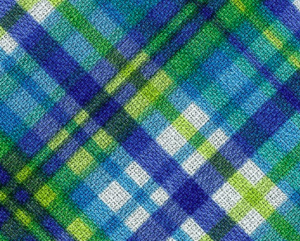
Tartan fabric - where to use it
Today, tartan is a classic that is associated with conservatism, nobility and a sense of style. Probably every famous brand has presented products made from this material at least once. It is used in various fields:
- Production of upholstery for furniture sets, textile wallpaper. This design of the house allows you to recreate the typical motifs of the English classics in the interior.
- Sewing curtains and drapes. The Scottish checkered pattern on the windows fills the house with comfort and homely warmth. For such products, artificial fabrics are preferably used due to their low cost and practicality. Curtains in shades of blue with a characteristic pattern are ideal for decorating children's rooms and bedrooms.
- Production of scarves and neck scarves. Accessories add a special charm to your look. They complement plain coats and business suits.
- Sewing uniforms. The tartan school uniform is the calling card of many elite lyceums and schools. It combines classics, sophistication and bright colors.
Plaid clothing creates a strict, business style. At the same time, with its help, designers create fashionable, catchy images. A skirt or dress made of this material is suitable for going to the office, meeting with partners or having an interview. If you complement the outfit with accessories, heels and a stylish handbag, the outfit is suitable for a party or meeting with friends.
Scottish plaid is a fabric that requires proper care
The classic fabric consists of pure or combined wool. This must be taken into account when caring for things. To preserve the original appearance of the fabric, you need to follow the recommendations for maintaining woolen items:
- It is not advisable to wash outerwear, jacket, and business suit yourself. It is better to use dry cleaning services.
- Items should be washed by hand. Machine washable only with a special wash cycle for wool.
- The water temperature should not exceed thirty degrees.
- Soaking things for a long time is prohibited.
- You can only wring out the wool with your hands.
- To dry things, a flat, horizontal surface is required.
- Iron only with a slightly damp cloth.
To remove the stain, use a dry, soft brush. A special machine is suitable for removing pellets. If you don't have one, you can use an old toothbrush.


 0
0
